THE CLASSIC HORROR FILM
By Jeffrey-Baptiste Tarlofsky
By Jeffrey-Baptiste Tarlofsky
Lesson 22 consists of 7 video lectures and transcripts of those lectures, and 6 film excerpts. Start with the lecture, Part 1, and continue down the page in sequence until you reach the end of the lesson.
レッスン22は7本のビデオレクチャー(レクチャーのテキストがビデオレクチャーの下に記載されています)と6本の動画で構成されています。
このレッスンは、ページをスクロールダウンしながら最初から順番に動画を見たりテキストを読んでください。
Part 1 – We have closely studied the three Universal horror classics; Dracula, Frankenstein, and The Wolf Man as well as their sequels and reboots and a few other films related to them. We have delved deeply into individual films, but now it is time to make some broad comparisons and draw connections between the films. In this lesson, I will be revisiting scenes from films we are already familiar with. My goal is to explore a few key themes that run through most of the films.
Let’s begin by first taking another look at a scene (1a below) from Dracula and then another look at a scene (1b below) from Curse of the Werewolf.
Part 2 – In Dracula, Mr. Renfield does not heed the wise advice of the innkeeper. In the villages around Castle Dracula, it is common knowledge what lurks in the castle. It is where the vampires are. As the innkeeper says, “Dracula and his wives feed on the blood of the living”.
The peasant in Curse of the Werewolf says to the beggar, “Who had to pay for this wedding? Who has to pay for that feast? We shall…if you want any charity you better go to the castle. That’s where all our money is”. This would seem to be exactly the opposite advice from what the innkeeper told Mr. Renfield, but in both films, the point is the same: the local nobleman brings misery to the ordinary people who live under the shadow of his castle. Of course, the innkeeper is talking about Dracula drinking people’s blood, while the peasant is talking about the taxes the Marquis imposes, but as we know, horror films frequently employ symbolism. The windmill in Frankenstein was a symbol of the cross and the silver money in Curse of the Werewolf symbolized betrayal and selling one’s soul as Judas had done. I want to argue that in Dracula, as well as other horror films, blood is used to symbolize a number of different things.
 For example, blood often symbolizes money (and the reverse is also true, money can symbolize blood). The English language is full of expressions that connect blood and money. For example, “blood money” is (1) money in payment for causing the death of another or, (2) money paid in compensation to a family or tribe for causing the death of another”. The thirty pieces of silver paid to Judas was “blood money” for betraying Jesus to the Romans (leading to his execution by crucifixion). Another example is the expression “blood and sweat”. “Blood and sweat” refers to labor (for which one is supposed to be paid money). However, in feudal systems where nobles ruled over the peasants, the peasants would often work in the fields (giving their “blood and sweat”) but were usually unpaid. In fact, the crops they worked so hard to grow would be taken from them as “taxes” to the nobleman. Of course, if they resisted these confiscations they would “pay in blood” when the nobleman sent his soldiers to punish them with torture and death. Dracula drinks the peasants’ blood while the Marquis taxes them almost to the point of starvation. It amounts to much the same thing. In both cases, the nobleman in the castle is the source of the sufferings of the people he rules over. Blood and money (or taxes in the form of crops) represent the two ways in which noblemen cause misery to their subjects; through violence and/or through confiscatory taxation.
For example, blood often symbolizes money (and the reverse is also true, money can symbolize blood). The English language is full of expressions that connect blood and money. For example, “blood money” is (1) money in payment for causing the death of another or, (2) money paid in compensation to a family or tribe for causing the death of another”. The thirty pieces of silver paid to Judas was “blood money” for betraying Jesus to the Romans (leading to his execution by crucifixion). Another example is the expression “blood and sweat”. “Blood and sweat” refers to labor (for which one is supposed to be paid money). However, in feudal systems where nobles ruled over the peasants, the peasants would often work in the fields (giving their “blood and sweat”) but were usually unpaid. In fact, the crops they worked so hard to grow would be taken from them as “taxes” to the nobleman. Of course, if they resisted these confiscations they would “pay in blood” when the nobleman sent his soldiers to punish them with torture and death. Dracula drinks the peasants’ blood while the Marquis taxes them almost to the point of starvation. It amounts to much the same thing. In both cases, the nobleman in the castle is the source of the sufferings of the people he rules over. Blood and money (or taxes in the form of crops) represent the two ways in which noblemen cause misery to their subjects; through violence and/or through confiscatory taxation.
 Hollywood did not invent violent, greedy noblemen. They really existed throughout the history of Europe, Japan, and everywhere else where feudal systems existed. But what Hollywood did do in its horror films was depict these violent and greedy nobles as “monsters”. Dracula is the perfect example because he was a real figure in history. Bram Stoker may have been the first to transform him from an evil man into a supernatural monster, but it is Hollywood that gave us the image of this monster we all recognize. But as a real figure in history who was a noble “monster”, Dracula is hardly alone. For example, Countess Elizabeth Bathory was a Hungarian noblewoman believed to have tortured and killed as many as six hundred and fifty young girls and women between 1590 and 1610. Dracula’s excuse for his mass killings was that he was enforcing the laws of his kingdom, Elizabeth Bathory tortured and killed because she enjoyed it.
Hollywood did not invent violent, greedy noblemen. They really existed throughout the history of Europe, Japan, and everywhere else where feudal systems existed. But what Hollywood did do in its horror films was depict these violent and greedy nobles as “monsters”. Dracula is the perfect example because he was a real figure in history. Bram Stoker may have been the first to transform him from an evil man into a supernatural monster, but it is Hollywood that gave us the image of this monster we all recognize. But as a real figure in history who was a noble “monster”, Dracula is hardly alone. For example, Countess Elizabeth Bathory was a Hungarian noblewoman believed to have tortured and killed as many as six hundred and fifty young girls and women between 1590 and 1610. Dracula’s excuse for his mass killings was that he was enforcing the laws of his kingdom, Elizabeth Bathory tortured and killed because she enjoyed it.
Among the legends about Bathory were accusations that she killed young virgin girls in order to bathe in their blood to keep herself looking young — blood as a symbol of eternal youth.
Blood is also a metaphor for lineage (family heritage). In English when we say, “you are my blood”; it means that we are from the same family. Among the European nobility, there was an obsessive desire to make sure that their bloodlines remained “pure” and “untainted” by marrying people they considered their inferiors. No self-respecting noble would ever have dreamed of marrying a peasant. Moreover, the European nobility was very conscious of their stature within the nobility. No princess could be asked to marry a mere Baron, for example. This meant that the higher in rank you were as a noble the fewer and fewer people were considered eligible for you to marry. This led to the practice of “inbreeding” (that is marrying members of one’s own family). Every student who has studied basic biology knows that this leads to all kinds of genetic diseases and abnormalities. Among the European nobility, inbreeding led to cases of inherited hemophilia, insanity, facial deformities, dwarfism, hunched backs, and in one family, hypertrichosis (extreme hairiness that makes men look like werewolves).
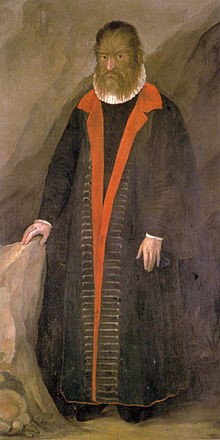
Petrus Bonsalvus, Spanich noblemen 1618
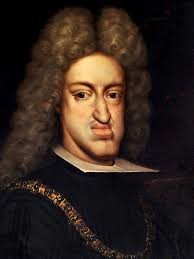
Charles II, King of Spain

Madelene Gonsalvas
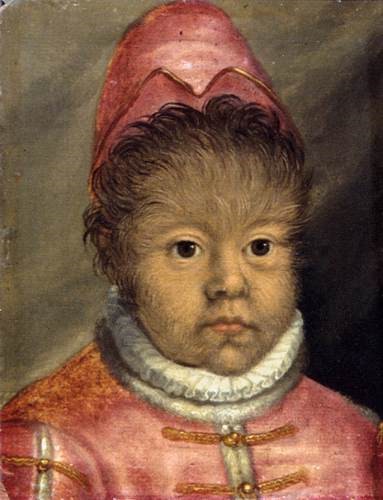
Henry Gonsalvas
In fact, it is now believed that Countess Bathory was the product of inbreeding, which may have caused her to be insane, contributing to her monstrous behavior. We should recall our earlier definition of what a “monster” is. A monster is a human or animal of extreme ugliness or evil. By that definition, many European nobles were “monsters” in more than one sense; they were extremely ugly, and/or extremely evil. Recall what the word “curse” means. A “curse” is something that in some cases can be passed down from one generation to the next — just as genetic diseases such as hypertrichosis are passed on through DNA. The greatest irony in the history of the European nobility is that their attempts to keep their “bloodlines” pure was what led to so many of them becoming “monstrous”.
Above, you see the image of the nobleman Petrus Gonsalvus, and below are his daughter, Madelene and son, Henry.
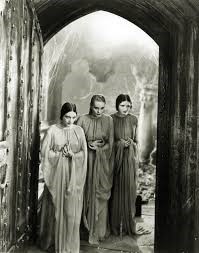 In the film Dracula (1931), we know that Dracula is about four hundred years old when the film is set (1890). But in both the novel and the film, Dracula only has three “wives” (other vampires) in the castle with him. Surely, he must have had hundreds if not thousands of victims over the past four hundred years, but he only chose three of them to become vampires like himself.
In the film Dracula (1931), we know that Dracula is about four hundred years old when the film is set (1890). But in both the novel and the film, Dracula only has three “wives” (other vampires) in the castle with him. Surely, he must have had hundreds if not thousands of victims over the past four hundred years, but he only chose three of them to become vampires like himself.
Why did he choose them? Look at the clothes the women were buried in. These are not the clothes of peasant girls. They were buried in flowing silk gowns, which would have been much too expensive for peasants to afford and certainly far too expensive to bury their daughters in.
These are noblewomen Dracula has chosen as his “wives”. Remember that a vampire can simply drain all the blood from his victim and kill them…or the vampire can force the victim to drink his blood and transform them into new vampires. Dracula, a great prince of his time, would certainly not have offered the “gift” of becoming a vampire to anyone who was not of “noble blood”. In fact, as a high-ranking prince, he would probably only have accepted women of similar rank to become his “wives”. No wonder there are only three of them.
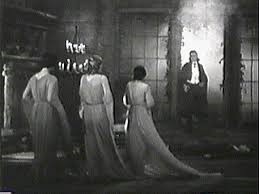 However, after hundreds of years of preying on the local peasants, Dracula can no longer easily find victims. The peasants know where he is and they know what he is. They are very careful to lock themselves in at night, say their prayers, and wear their crosses. This is why Dracula is moving to London. With a population of almost seven million in 1890, London was the richest and most modern city in the world in 1890. Dracula will find it much easier to find victims among these millions of city dwellers than in the mountains of his homeland.
However, after hundreds of years of preying on the local peasants, Dracula can no longer easily find victims. The peasants know where he is and they know what he is. They are very careful to lock themselves in at night, say their prayers, and wear their crosses. This is why Dracula is moving to London. With a population of almost seven million in 1890, London was the richest and most modern city in the world in 1890. Dracula will find it much easier to find victims among these millions of city dwellers than in the mountains of his homeland.
Dracula may have moved to London, but he retains his old ideas about social rank as you will see in the following excerpts
Part 3 – Dracula kills his first victim, a poor flower girl, draining her of all her blood. But notice that he goes to great lengths to meet and speak to Lucy and Mina. It is because they are obviously upper-class girls. He has far more sinister designs for them. As he says, “there are worse things awaiting man than death”. He intends to make them his new “brides”. But Lucy finds the idea of marrying a foreign nobleman romantic. It will, however, be Mina who Dracula chooses to make his “bride”.
Have you noticed just how much emphasis is placed on marriage in almost all our horror films? It isn’t just in Dracula (1931), in Bram Stoker’s Dracula (1992). Dracula is actually seeking his reincarnated wife, Elizabeta. Curse of the Werewolf begins with the wedding of the Marquis and later in the film it is because Christina is being forced into a similarly arranged marriage with another nobleman that she and Leon cannot get married. In The Wolf Man, Larry and Gwen are obviously interested in each other, but their romance is forbidden because Gwen is already engaged to be married to another man.
But of all the films we have studied this year the concern with marriage is most intense in Frankenstein.
Part 4 – Baron Frankenstein is not the least bit interested in what his son is actually doing, (leaving university, digging up dead bodies here and there, violating the laws of nature), rather he wants Henry to come home and get married so he can continue the family bloodline. As the Baron’s only son, it is essential that Henry marry and produce a male heir (a chonan) as soon as possible. The Baron is convinced that the reason Henry is not at home getting ready for the marriage is because he has found “another woman”. What the Baron has not said is that his greatest fear is that the “other woman” might be an ordinary village girl. While noblemen had the “legal” right to sexually assault their subjects, (because they made the laws), in many cases they did not need to force themselves on the local village girls. A village girl might easily be attracted to a nobleman or a nobleman’s son because of his education, social position, and, of course, his wealth. An attractive girl might be showered with expensive gifts and taken places she would never be able to go to on her own.
If these romances were between a village girl and the son of a nobleman they would have to be kept secret because neither family would approve. But just as Leon and Christina found ways to meet secretly so could a young nobleman arrange to meet a local village girl somehow or other. Unlike Christina, a young nobleman would have his own money and be able to go where he pleased without supervision. Young noblemen often had mistresses in nearby villages. This is almost exactly what Larry Talbot seems to be attempting when he romances Gwen. He clearly does not care that she is engaged to be married. In some cases, these romances would lead to the birth of an “illegitimate” child (a child born to an unmarried mother). This would be a huge problem for the young woman because sex before marriage was taboo in most cultures. Having an illegitimate child would make her an outcast from her family and her village. The solution to such “problems” was often to have the girl “go away” for a time and have the baby secretly. Then the nobleman would pay someone to take the child and raise them in another village. The young woman would most likely never see her child again, but she would be able to return to her own family without the “shame” of having had an illegitimate child. The nobleman would also often pay the family money to “compensate” them for the loss of their daughter’s virginity (although this would never actually be talked about). Such payments would always be made through a third party.
However, just as you would expect, there were cases where a nobleman and woman from the village would genuinely fall in love with each other. If he were already the Lord or if he was already married, the usual course of events would be that he would provide his mistress with money and a comfortable place to live where he could visit her on a regular basis. She would remain his unmarried mistress. The real difficulties would arise if a young nobleman (someone like Henry Frankenstein) fell in love with a village girl and married her against his father’s wishes. Of course, this would be extremely difficult to do since no local clergyman would ever perform such a marriage (and in the past, only clergy could perform marriages). The couple would have to run away (as Leon and Christina plan to do), change their names, and find a clergyman who would perform the wedding (often for a bribe). Usually, this would mean the couple could never return home because the father of the noble family would have disowned any son who married without his consent. More frightening still, in cases such as Leon and Christina’s, where a man of “lower birth” ran away with a girl of higher social standing, the father of the girl might accuse the man of kidnapping and rape, which could lead to a long prison term or even a sentence of death if the couple were caught.
Baron Frankenstein says, “There is another woman and I’m going to find her!” What would he do once he found her? He would doubtless find out who her father was and go to him or, more likely, send a representative to him. A threat would be made or a bribe offered Either way it would be made clear to the father that he was to “control” his daughter. This might mean forcibly restraining her at home under close supervision or perhaps sending her away. If she were pregnant, it would most likely mean sending her away. In some cases, after the birth, the young woman would be imprisoned in a nunnery where she might be condemned to spend the rest of her life depending on the whims of the nobleman and the girl’s family. She would have no control whatsoever over her own destiny.
To return to the Frankenstein story, once Henry does return home and agrees to the wedding he seems perfectly content to forget about his experiments and his creation.
Part 5 – Henry is eager to forget the “horrible days and nights” he spent on his experiments and eager to talk about his wedding to Elizabeth, but it seems he has also forgotten the fact that while there was not “another woman”, there was an illegitimate “child”: the monster. The relationship of Henry to the monster is a close parallel to the relationship of God to Adam, but in the Bible, God named Adam and Adam called God “father”.
Frankenstein never gives the monster a name. In cases of illegitimate children, they were not allowed to use their father’s family name unless they were “recognized” by the father. Fathers did occasionally recognize illegitimate children as their own and “give them a name”. In many cases, this would be because there was no other heir to the family name. For example, William the Conqueror was the illegitimate son of Robert, Duke of Normandy. His father recognized him and William went on to conquer and rule first Normandy and then England, and to pass his kingdom and titles on to his children. But Henry Frankenstein not only never gives his monstrous “son” a name, he also rejects and abandons him to the mercy of first, Fritz, who tortures him with fire and whips and then, Dr. Waldamn, who drugs him and attempts to vivisect him. Henry takes no responsibility for his “son” until the monster interrupts his wedding by attacking Elizabeth.
Part 6 – Another attack on a woman in her bedroom by a monster. Both Tod Browning and James Whale were aware of the suggestion of sexual assault in these scenes in their films and they knew they were daring the censors to notice the sexual suggestiveness of the scenes. Moreover, if Henry is the monster’s “father” this would make Elizabeth his “mother” in some sense and the suggestion of this being an incestuous sexual assault makes the scene all that much more disturbing. But something needs to disturb the Frankenstein family because they seem perfectly prepared to forget all about the inconvenience of the monster and get on with the wedding. Just before the attack, the Baron was explaining about the flowers used for three generations at Frankenstein weddings.
Part 7 – Here is one more reason to admire the genius of James Whale as director. Just before this scene, we have seen little Maria give the monster a fresh and living flower as a kind of “birthday” gift and we have seen him smile as he delights in this first and only gift he ever receives in his short life. Then the two “children” play a game with the flowers that leads to the tragedy of Maria’s accidental death. The flowers become associated with death.
Then flowers appear again in the film as the Baron lifts the glass bell and explains that “…for three generations these flowers have been worn at our family weddings” and he says he hopes the tradition will be carried on by Henry’s son in the future. Again, this is a reference to the necessity of producing male heirs to carry the family name as well as family traditions. The flowers here are associated with the new beginning of a marriage and the hope for a new life. But these flowers are dead, not fresh and alive. They only look alive because they have been artificially preserved under the glass. This echoes what Henry has done by creating artificial life by assembling the parts of dead men to make his monster. But more especially, I think the dead flowers symbolize the Frankenstein family itself and more broadly the “dead” institution of hereditary nobility in Europe. The nobility may look good in their expensive clothes and castles, but like vampires, the nobility are, in a sense, not really alive, but only artificially made to look so. James Whale is suggesting the European nobility were like dead flowers kept under glass.
 Whale was English, not American, or to be more precise, he was an Englishman who became an American as so many Europeans were doing at the time Frankenstein was being made. It was a time, let us not forget, when Europe was still dealing with the aftermath and devastation of World War One. America was the place people fled to in order to escape from the crumbling, stagnant, dead systems of Europe. The rigid class system was certainly part of that stagnation with the worst part of that system being the privileges and power still held by a corrupt hereditary nobility. Recall that World War One was a conflict that started when the German emperor and the Russian emperor could not solve their differences despite the fact they were related by marriage and were both related to the King of England by either “blood” or marriage. All those political marriages made for hundreds of years between royal and noble houses could not prevent a war between royal houses that cost the lives of 40,000,000 people.
Whale was English, not American, or to be more precise, he was an Englishman who became an American as so many Europeans were doing at the time Frankenstein was being made. It was a time, let us not forget, when Europe was still dealing with the aftermath and devastation of World War One. America was the place people fled to in order to escape from the crumbling, stagnant, dead systems of Europe. The rigid class system was certainly part of that stagnation with the worst part of that system being the privileges and power still held by a corrupt hereditary nobility. Recall that World War One was a conflict that started when the German emperor and the Russian emperor could not solve their differences despite the fact they were related by marriage and were both related to the King of England by either “blood” or marriage. All those political marriages made for hundreds of years between royal and noble houses could not prevent a war between royal houses that cost the lives of 40,000,000 people.
James Whale’s background was working-class (on the same level as the “peasants” in the horror movies we have seen). Whale’s generation of working-class men of all European nations had died by the millions in World War One. They would be the first generation of the working class not only to resent the class system but to actually overthrow it in the Russian Revolution of 1917. In our next lesson, we see just how Hollywood both supported and subverted the class system in the horror movies we have been studying.